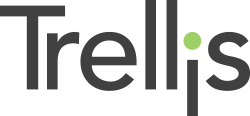Believe it or not, an efficient retirement plan committee does not happen by chance. The “best practices” your committee upholds form the foundation for a prudent process creating an opportunity for employees to pursue their retirement goals. Companies of any size can benefit from a consistent process and should consider implementing a few of the tips below.
Evaluate What’s Established
If you have a company 401k plan and you are on the retirement committee, then you are a plan fiduciary. As such, you have many duties and responsibilities to uphold to help support plan compliance to the benefit of your company and the plan participants. This is a great opportunity. However, is there more you can do to help limit liability and create a track for retirement readiness?
It’s more than likely you have a process in place to monitor and manage the company retirement plan; but with this process in place, have you been able to:
- Measure the success of your plan?
Evaluate provider relationships and plan services and fees?
Limit liability?
If this doesn’t evoke a confident answer, let’s take a step back and review how you can create a repeatable process.
Process, Process, Process
Creating a repeatable process can help limit liability by demonstrating that you have carried out your responsibilities properly by documenting the procedures used and the thought process involved to fulfill your fiduciary duties.[1] Additionally, a well put together and effective retirement plan committee is the foundation of successful fiduciary decision-making and organizational risk management for plans of all sizes.[2]
Choosing the right team
First things first, who is on your team? If you’ve assembled a committee team, it may include a business owner, CEO, CFO, President, Human Resources Managers, and/or other professional colleagues. Surprisingly, members of your retirement plan committee don’t need to be experts in retirement or investing; however, they should be committed to the task and have a reputation for making good decisions.2
Documenting
Within your team, you must delegate roles and begin documenting all plan actions and why they are prudent. Proper documentation serves as proof that the committee’s responsibilities are being prudently executed.[3]
Here are some of what the retirement plan committee’s minutes should include:3
- List of all party’s present with identification of roles
- Description of all issues considered at the meeting
- Documentation of all materials reviewed during the meeting
- Documentation of all decisions made and the analysis and logic supporting each
- Identification of any topics to be continued in subsequent meetings
The Prudent On-going Process
Once your committee is in motion, it’s time to start the on-going process of monitoring, reviewing, and evaluating information. When you review your company retirement plan, create a checklist of the following:
- Gather all plan-related documents
- Create folders
- Read through and understand the information
- Ask team members to assist if needed
Once the delegated committee member has reviewed the plan, it’s time to evaluate provider relationships and plan services. Consider evaluating retirement readiness, plan administration, costs, investments, and service providers.
As your committee monitors the plan, ask yourself and the team members one important question: How could you make your company’s retirement plan offering better? Some suggestions could be fiduciary advisor investment review, fee benchmarking, auto-enrollment, and auto escalation.
Maintenance within the Retirement Committee
Providing Fiduciary Training
As mentioned, your committee isn’t required to have retirement and investment experts. That being said, it is crucial to provide fiduciary training so they can be educated and fully equipped to serve on the retirement plan committee. Key areas to cover should include the definition of a fiduciary under ERISA, the basic duties and responsibilities required, fiduciary best practices, investment considerations and prudent process, and an overview of current legal and regulatory trends.[4]
How Often Should a Committee Meet per Year?
Industry experts suggest meeting 2-4 times per year: formal meetings should occur on a regular basis and should not take more than 1-2 hours if well-organized.4 Scheduling meeting at the beginning of the year tends to be effective for all parties. One idea is to pre-schedule and put the placeholder dates on their calendars so you have the meetings calendared and set for the year.
Looking Forward
Why should you evaluate your fiduciary process? As retirement plan committee members, you want your employees to reach a successful retirement, so always focus on the outcomes. Additionally, having a compliant plan can limit your liability as a plan sponsor. Lastly, ERISA is about the process! The committee needs to keep repeating, refining, and improving the company’s retirement plan; because at the end of the day, you want all of your employees to win at retirement.

About Northeast Benefit Services
Helping local business owners with accurate administrative, compliance services and
technical consulting for qualified pension and profit-sharing plans since 1982, especially those in Western New York.
www.northeast-tpa.com
This information was developed as a general guide to educate plan sponsors and is not intended as authoritative guidance or tax/legal advice. Each plan has unique requirements and you should consult your attorney or tax advisor for guidance on your specific situation.
[1] Department of Labor. “Meeting Your Fiduciary Responsibilities.” DOL.gov, Feb. 2012.
[2] Green Spring Wealth. “8 Simple Steps to a Great Retirement Plan Committee.” Green Spring Wealth, 2013. Web. 8 Aug. 2017.
[3] Powers, Tony. “Documenting Retirement Plan Committee Meetings.” KerberRose Wealth Management, LLC, 11 July 2016. Web. 08 Aug. 2017.
[4] Green Spring Wealth. “8 Simple Steps to a Great Retirement Plan Committee.” Green Spring Wealth, 2013. Web. 8 Aug. 2017.
